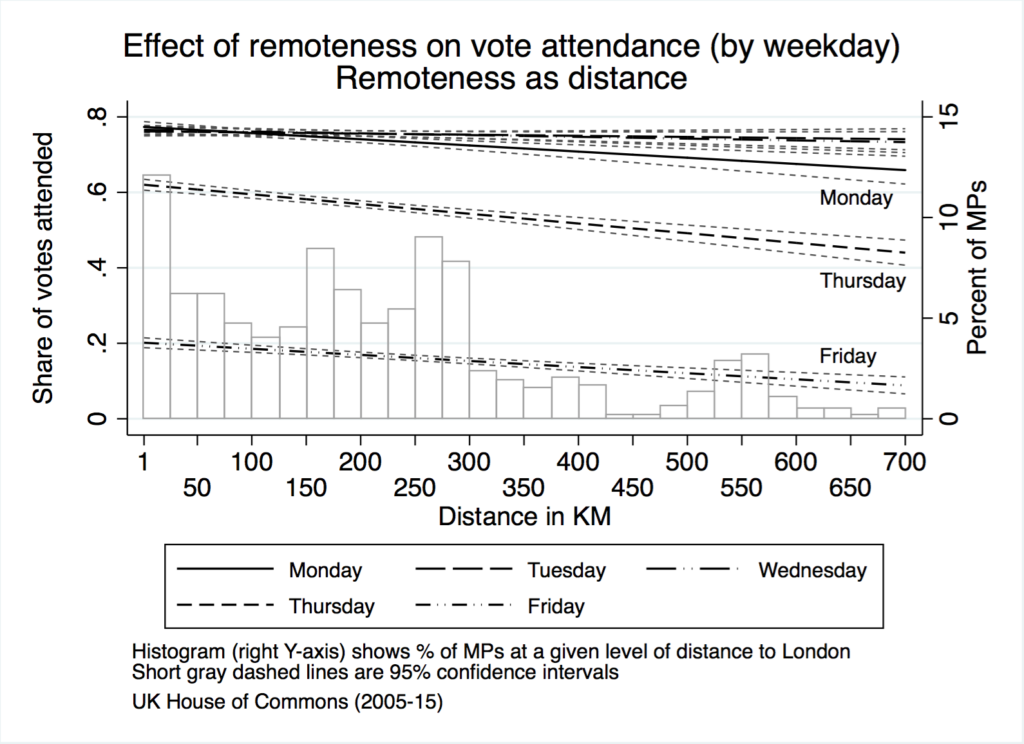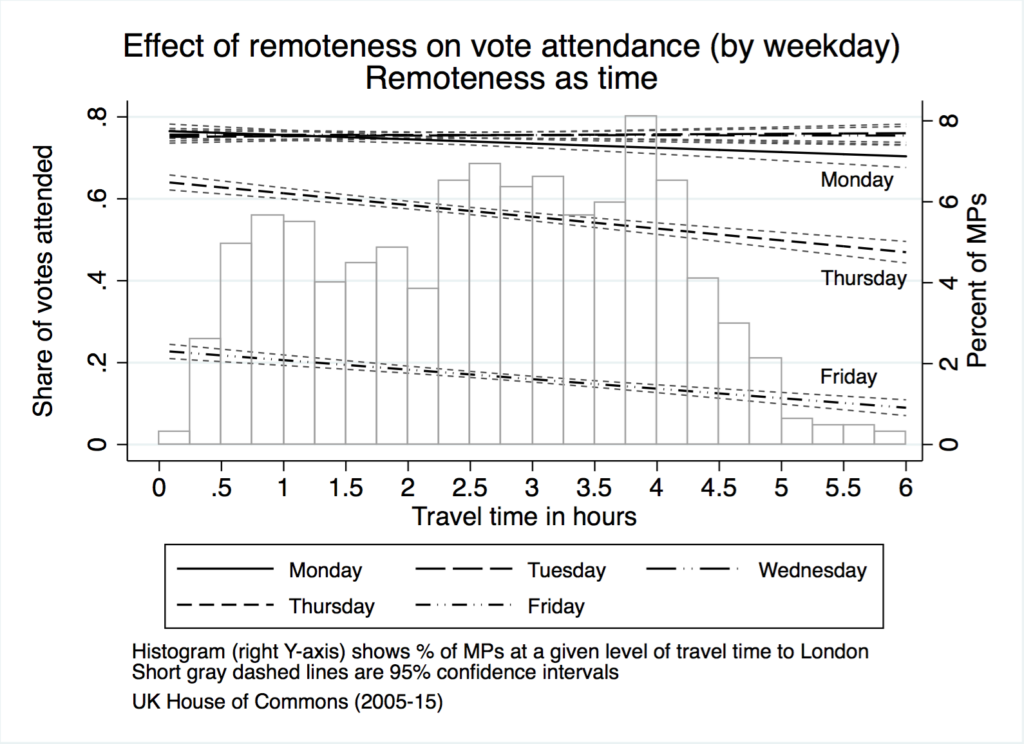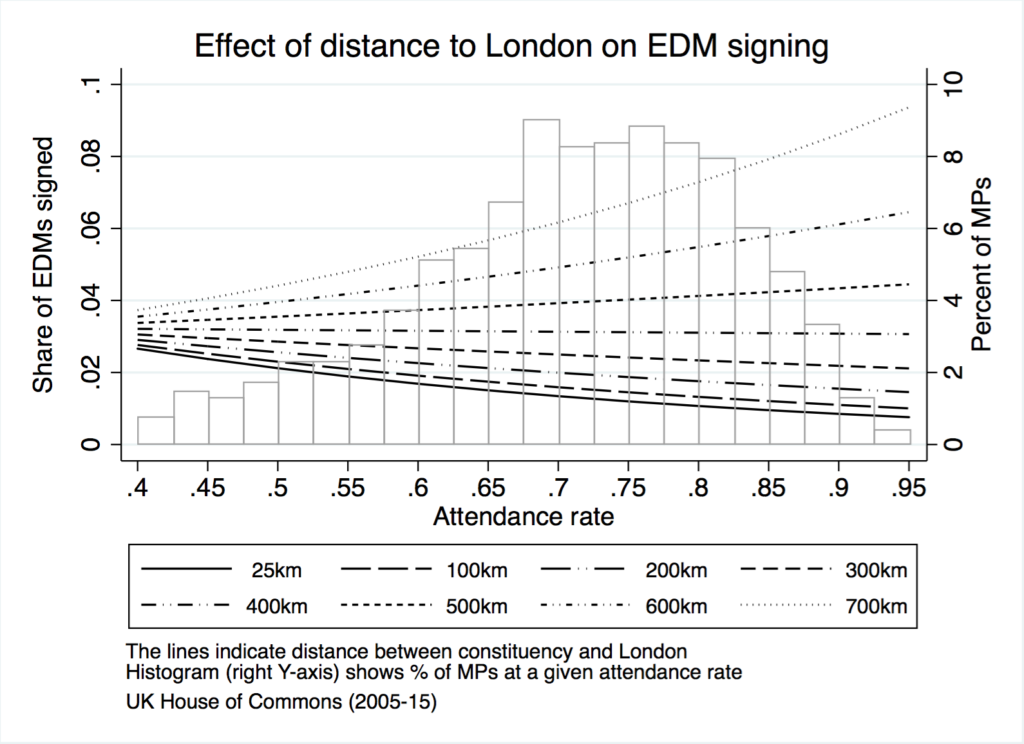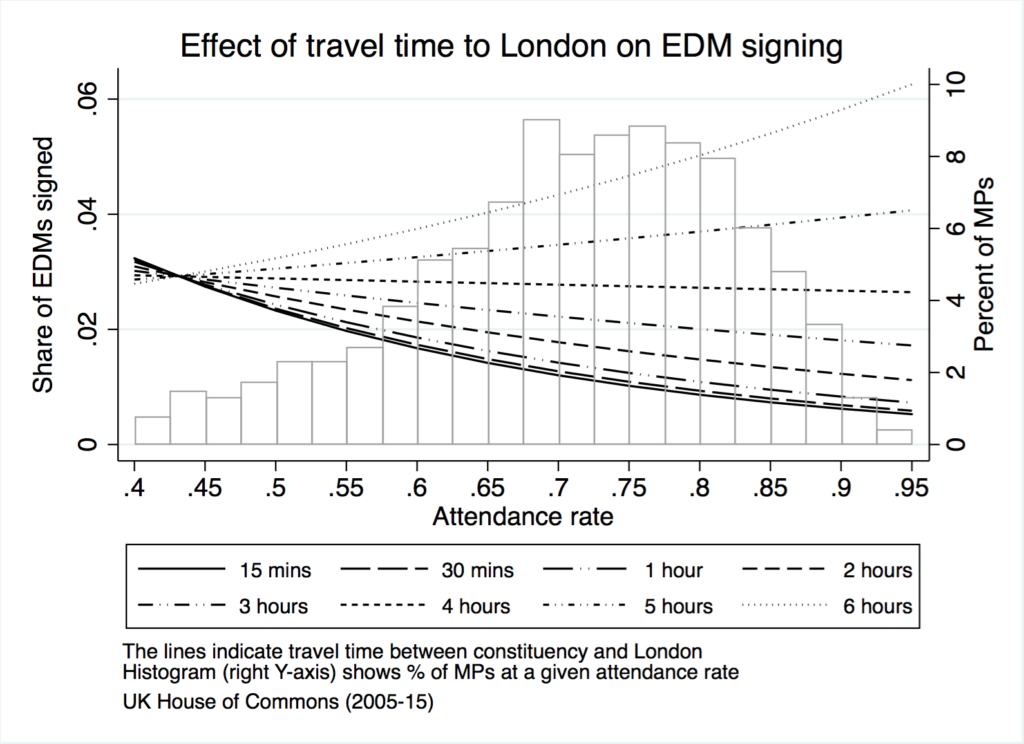Why geography matters: MPs with constituencies a long distance from Westminster choose different ways to represent their voters
MPs face demands on their time in both Westminster and their constituency. The greater the distance between the area they represent and Parliament, the more this requires trade-offs. David M. Willumsen finds that the type of parliamentary activities an MP takes part in is affected by the distance of their constituency from Westminster, which has implications for the principle of equal representation.
 Picture: Pixabay/Public Domain
Picture: Pixabay/Public Domain
Equality of citizens in the democratic process is a cornerstone of representative democracy: all voters should be equally represented. As such, analysing systematic differences in the quality of representation is a central question in political science, which has been explored with regards to interest groups, voter wealth and income, gender, race, ethnicity, religious affiliation, and educational levels. The role geography plays in representation, however, remains relatively unexplored.
Legislators face a large number of demands on their time, and with both Parliament and the constituency exerting a strong pull, they face trade-offs regarding were to spend their limited time. One aspect of this trade-off is, however, beyond their control: the extent to which their constituency is geographically near to, or far away from, the capital. A more distant constituency requires increased travel time, which decreases the time available for activities both inside and outside of the legislature.
In an article recently published in West European Politics, I explore how MPs’ representative activities are influenced by the constraints imposed on them by geography, and how MPs respond to the limitations imposed by a more remote constituency. Do legislators follow a logic of compensation, engaging in other, less time-sensitive representational activities in the capital? Or are they driven by a different logic, one based on a centre-periphery dynamic, where voters from more distant constituencies have a different relationship with the state, and expect different forms of representation than those closer to the capital?
To explore these questions, I collected the vote attendance records in the UK’s House of Commons (2005–15) and the Early Day Motions (EDMs) tabled in the same period. Attendance at votes is a good proxy for presence in the capital (and consequently for other activities pursued in the legislature), as MPs are expected to attend votes when possible. EDMs, non-binding motions on which neither debates nor votes are held, and which can be signed at any time, are a good example of a non-time-sensitive compensational representational activity. EDMs can be used by MPs to emphasise their role in the political process, while signalling to constituents that their MP is hard at work representing their interests in the capital. The UK House of Commons serves as an ideal case to explore these questions. There is wide geographical variation in the location of constituencies relative to the capital, and all MPs are elected using the same, geographically based, electoral system.
The key findings in terms of attendance are shown in Figure 1: regardless of whether remoteness is measured as distance or as travel time, the farther away a constituency is from Westminster, the fewer votes are attended by its MP. The extent to which this is the case, however, depends on the day of the week a vote takes place. On Tuesdays and Wednesdays (the two overlapping top lines), attendance is highest, and independent of how remote a constituency is; the two lines are essentially flat. On Mondays, there is a small effect of remoteness on attendance, with MPs from more remote constituencies attending votes at a lower rate than those from constituencies nearer London. A much stronger effect was found for attendance on Thursdays and Fridays, where MPs whose constituencies are far from Westminster attended votes at much lower rates than their fellow legislators from more proximate constituencies.
Figure 1: Effect of remoteness on vote attendance


Calculating the predicted attendance rates while holding all other variables at their means shows that an increase in travel time from 15 minutes to five hours would lead to a drop in the attendance rate of 5.8 percentage points, while an increase in the distance between Westminster and the constituency from 1km to 600km would lead to a decrease of 7.9 percentage points. Variations in constituency remoteness thus lead to both substantial and significant differences in attendance rates.
MPs’ attendance rates are thus clearly influenced by the remoteness of their constituency; the farther away, and the longer the travel time, the fewer votes they attend. As such, constituencies farther from London are less well-represented in Westminster. This raises the question of whether MPs use non-time-sensitive activities to compensate for lower attendance rates.
The key results from analysing the signing of EDMs are shown in Figure 2. As can be seen, for MPs elected in constituencies relatively near London (under 300km/less than 3 hours’ travel time), the lower their attendance rate, the more EDMs they sign, indicating that they are indeed using non-time-sensitive activities to compensate for their lower attendance rate.
Figure 2: Effect of remoteness on EDM signing rates


For MPs from more distant constituencies (400+ km/5+ hours), this is not the case. Instead, for such MPs, the higher the attendance rate, the greater the share of EDMs signed, indicating that a different logic is at play, which places a higher value on showing constituents that a legislator is active on their behalf in the capital. These MPs also use EDMs to signal their voters, but are not doing so in a compensatory manner. Rather, the driving force appears to be a centre–periphery dynamic, where good representation is perceived differently depending on how far removed a constituency is from the capital.
Thus, the MPs with the highest attendance rate, who have little to compensate for, differ in their behaviour depending on how remote their constituency is; the ones from more remote constituencies use EDMs in addition to attendance to signal to their voters that their interests are being represented at the centre, whereas MPs with similar attendance rates from more centrally located constituencies have no need to send such signals. Less active MPs behave much the same regardless of where their constituency is located.
Emphasising these centre-periphery dynamics, MPs from nationalist parties – Plaid Cymru in Wales, the SNP in Scotland and the SDLP in Northern Ireland (Sinn Féin do not take their seats in Westminster) – were found to attend significantly fewer votes, but sign more than twice as many EDMs as MPs from other parties, all other things being equal. MPs from these nationalist parties use EDMs to draw attention to the interests and concerns of their voters in their home nation much more than Labour, Conservative and other UK-wide party MPs do, while placing less emphasis on legislative work, as indicated by their lower attendance rates. This supports the argument that for MPs from more remote constituencies, EDMs are used to signal voters that their concerns are being raised at the centre, and are not a primarily a compensatory device.
In summary, and similar to the findings of systematic differences in representation based on gender, race, and income, substantial differences in representation exist driven by geographic factors, indicating that voters are unequally represented and may have worse access to the levers of power depending on where they live.
This work shows how the physical location of the capital matters for representation. While it is a rare event, capitals can be moved, as the examples of Brasília (previously Rio de Janeiro) and Berlin (Bonn) illustrate. As such, when faced with the choice of where to place a country’s capital, one consideration should be geography. By choosing a capital in a central geographic location, a lessening of systematic differences in political representation may be achieved.
This post represents the views of the author and not those of Democratic Audit. It draws on the author’s article ‘So far away from me? The effect of geographical distance on representation’, published in West European Politics (open access).
About the author
 David M. Willumsen has worked as a Post-Doctoral Researcher (Universitätsassistent) at the University of Innsbruck since October 2016. He holds a PhD from the European University Institute, Florence.
David M. Willumsen has worked as a Post-Doctoral Researcher (Universitätsassistent) at the University of Innsbruck since October 2016. He holds a PhD from the European University Institute, Florence.





 Democratic Audit's core funding is provided by the Joseph Rowntree Charitable Trust. Additional funding is provided by the London School of Economics.
Democratic Audit's core funding is provided by the Joseph Rowntree Charitable Trust. Additional funding is provided by the London School of Economics.